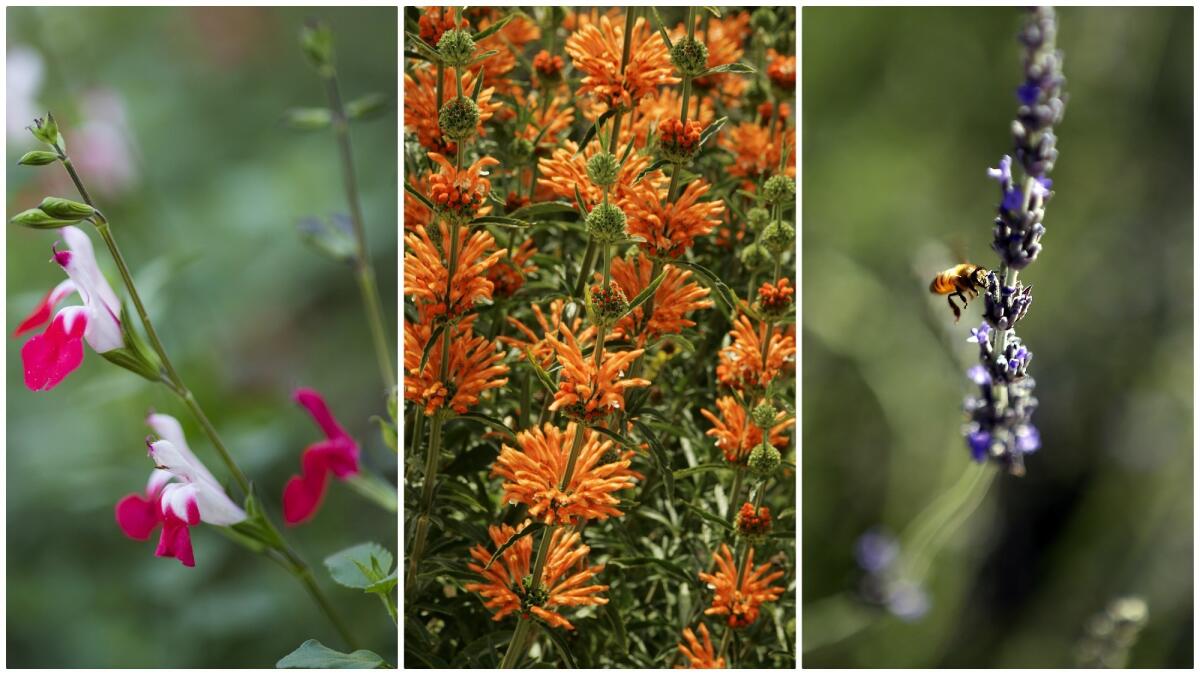5 secrets to pampering your perennials now, so they bloom all year long
Perennials are the dependable workhorses of our gardens, blooming year after year and often growing so big they can be divided into new plants for family, friends or those bare spots in your yard.
Of course there’s a catch — it takes a year or longer for perennials to hit their stride. Gardeners who want quick color often gravitate to annuals — plants that live just one season. But they have a catch, too. They have to be replaced every year.
If you’re willing to be patient, perennials are definitely worth the wait, says Joan Stevens, an adjunct professor of biology at Pasadena City College and self-described “flower farmer and radical gardener.”
She added: “They’ll fill in your garden with great greenery and many beautiful flowers, blooming at different times of the year.”
Plus, there’s that bonus point — after a few years the plants are often big enough to divide and share. Stevens recommends talking to neighbors with mature landscapes to get ideas about what grows well in your area.
The longtime gardeners in your neighborhood “are a goldmine of information,” she said, “and they’re usually eager to share their plants as well as what they know.”
Stevens has a long list of perennial favorites — the many varieties of lavender and salvia, Jerusalem Sage, with its tufts of lemon-yellow flowers, Lion’s Tail with its orange, Dr. Seuss-like blooms, and for shady areas, Helleborus, a profuse bloomer in multiple colors.

Here are her tips for perennial care — and for dividing, when the time is right....
1. Heed directions
Be careful when choosing perennials, because once established, they can take over a garden. Read plant directions. Avoid surprises by learning how big the plant will grow, and be aware that even “full sun” plants can struggle in Southern California’s searing temperatures, especially when they’re young. Provide some temporary shade and water more frequently if plants look stressed and the soil is dry.
2. Coddle the young
The best time to plant perennials is before a rain or during cool weather. Wait until late afternoon, or when it’s overcast, mix some amendments and fertilizer with the native soil (Stevens like E.B. Stone Organics Planting Mix and Sure Start fertilizer) and then water well to compact the soil around the roots. If it’s going to be hot, Stevens props up pieces of cardboard to provide temporary shade for new plants until they settle in.
3. Water smart
Many perennials are drought-tolerant, but only after they’re established, Stevens said. Until then, they need regular watering, but remember, it’s much better to do infrequent deep watering (like 20 minutes two or three times a week) than frequent shallow watering.
4. Keep on cutting
With most perennials, “the more you cut, the more they grow,” Stevens said, but avoid cutting when it’s hot. If you want a bouquet, collect your flowers in the morning. Save hard pruning for when the weather gets cool, such as January or February.
5. Divide and multiply
The best time to divide overgrown perennials is before they start blooming. Avoid working in the garden when it’s muddy, because saturated soil compacts easily. Use a pointed spade to dig around the clump you want to divide, and then lift it out of the soil onto a tarp or tub to conserve the soil while you tease and/or pry the roots apart (Japanese garden knives are super-useful here).
“You don’t need to be gentle,” she said. “Many perennials have an invasive habit and are really really easy to grow. They will recover when you replant them.”
Japanese gardening knife (hori hori)
Hori hori knives are endlessly useful in the garden, from sawing roots to opening holes for planting. The LifeWell Gardening Products version features an all-steel blade and tang that extends through the handle. $20. Amazon.com.
Spear Head Spade
The pointed blade and short fiberglass handle makes the Spear Head Spade lightweight and great for digging in tight spaces or rocky, root-filled yards. $52 plus $12 shipping, Spearheadspade.com. Also available on Amazon.com.
9-gallon shallow Tubtrugs
Sturdy, flexible Tubtrugs by Red Gorilla are food-safe and versatile. $26. Amazon.com. Multiple sizes also available at gardeners.com and redgorillausa.com.





